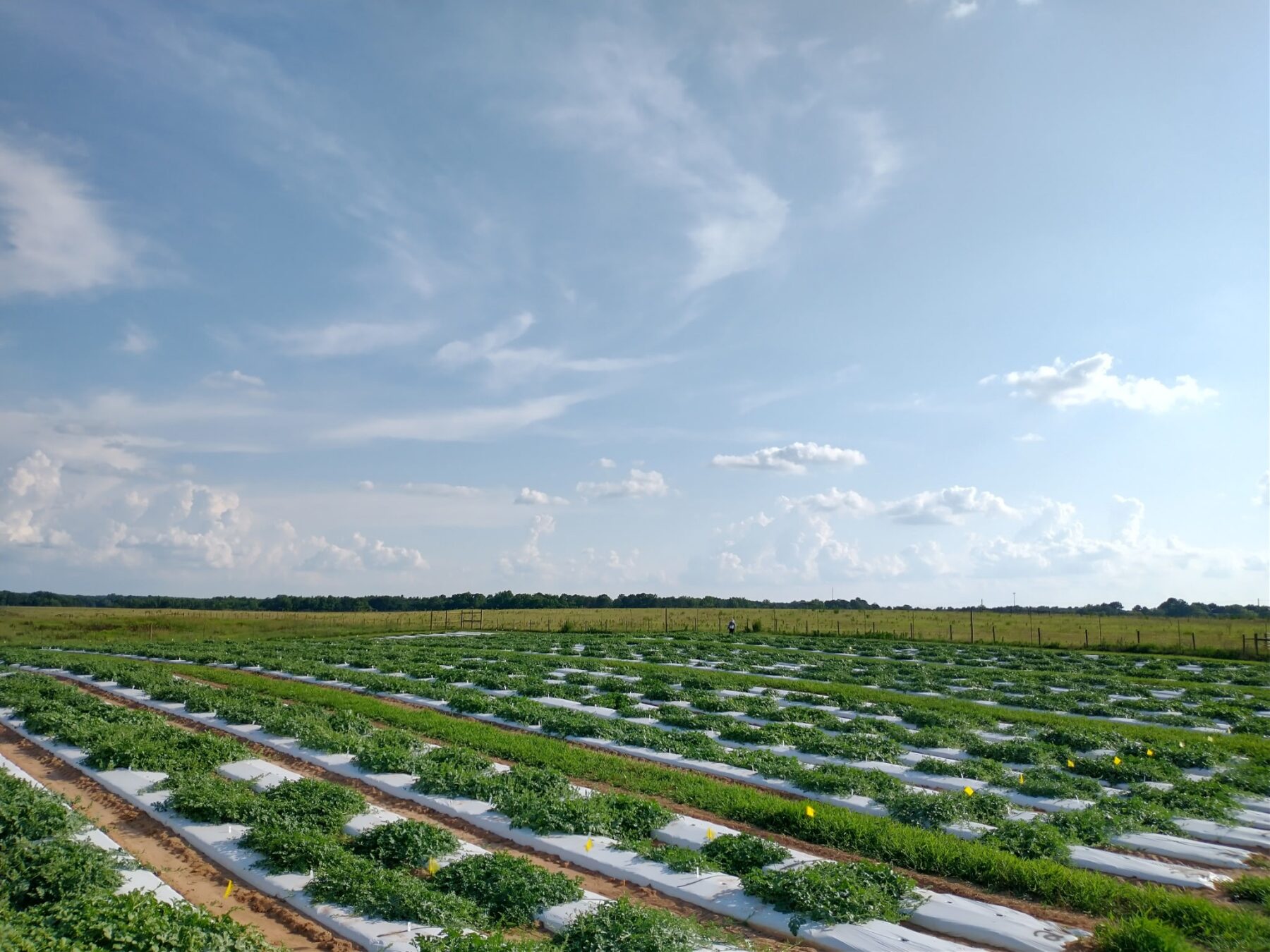
Phenotyping Core Collection : Field layout for anthracnose phenotyping, early in the season (Dr. McGregor Lab, UGA 2025)
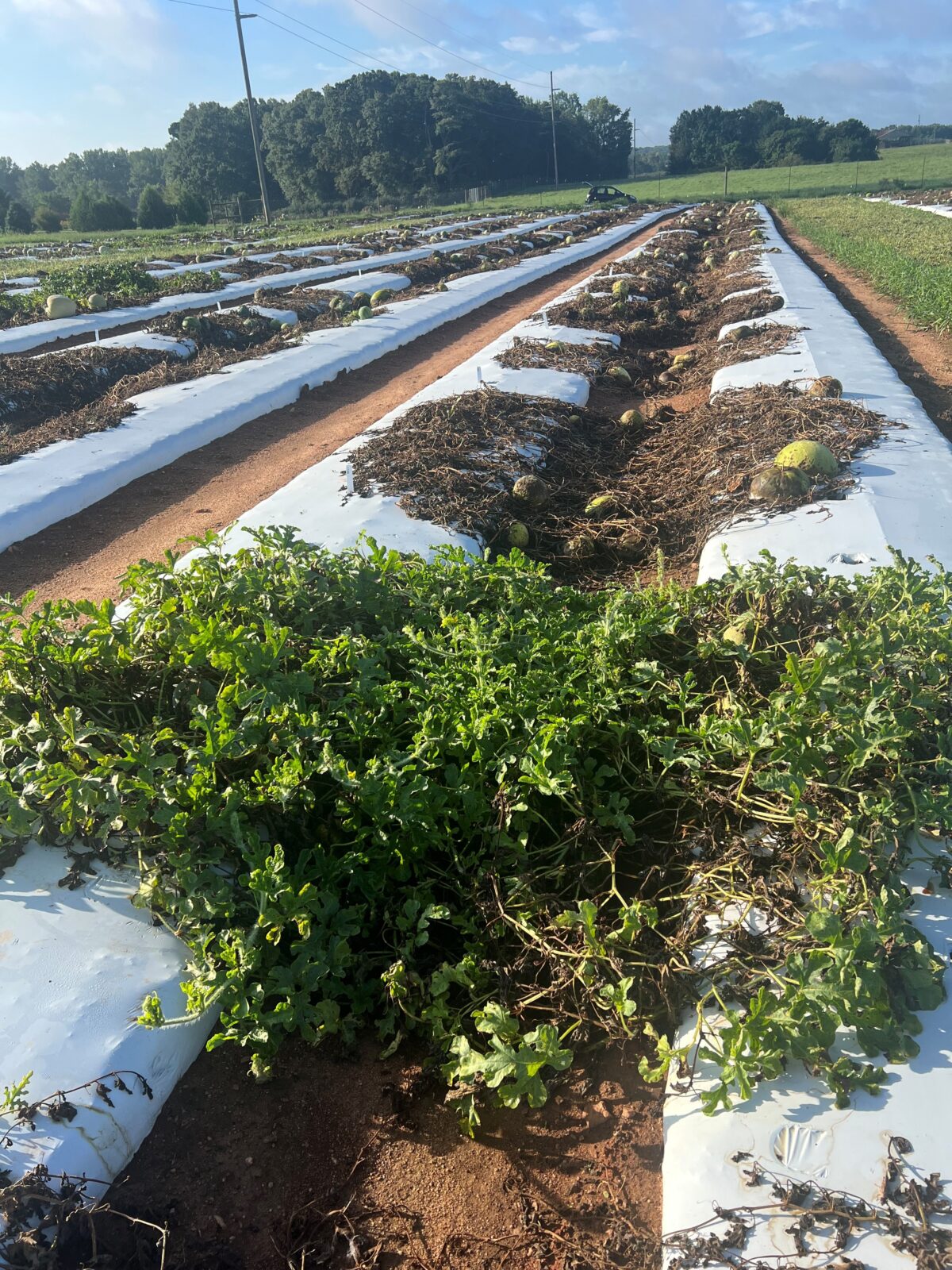
Resistant (green, healthy vines) versus susceptible (wilted, dead) watermelon genotypes at the end of the anthracnose Core Collection phenotyping trial (Dr. McGregor Lab, UGA 2025).
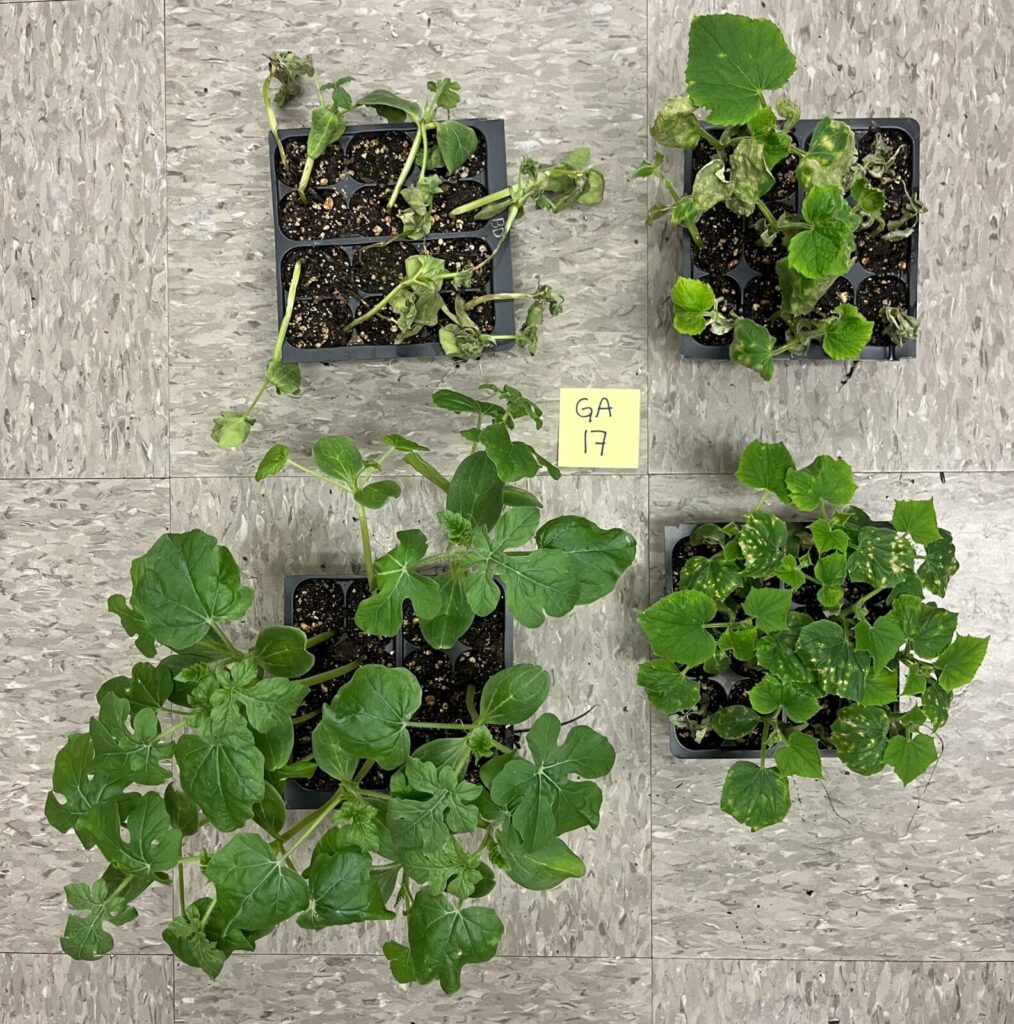
Race Typing: Race 1, showing collapse of watermelon ‘Black Diamond’ and lesions on cucumber cultivars ‘Marketer’ and ‘H-19’.(UFL; 2025)
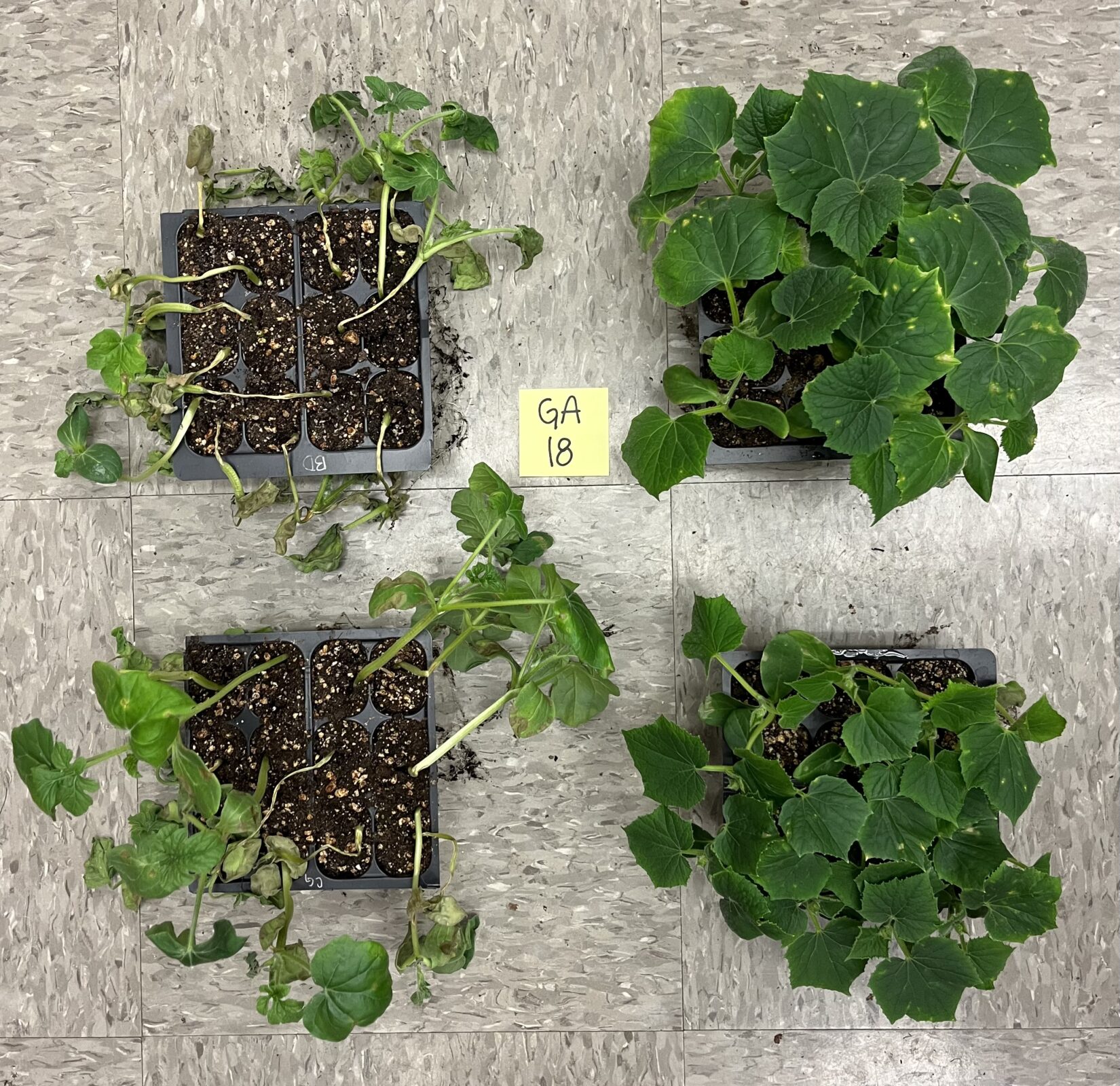
Race Typing: Race 2, showing collapse on both watermelon cultivars and lesions on cucumber ‘Marketer’. (UFL;2025)
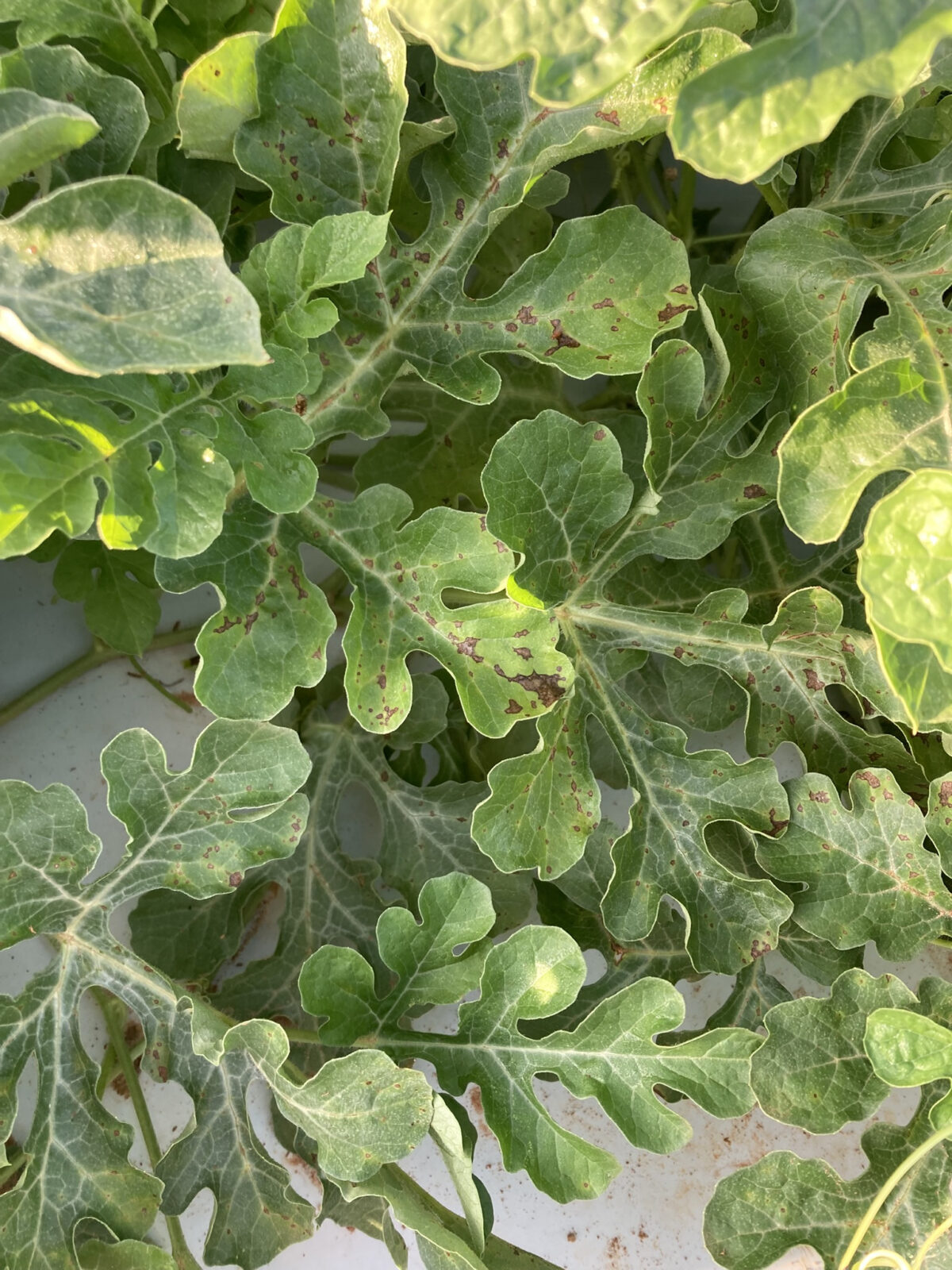
Watermelon Fruit Load Trial: Anthracnose symptoms on leaves (Dr. Coolong Lab, UGA 2025)
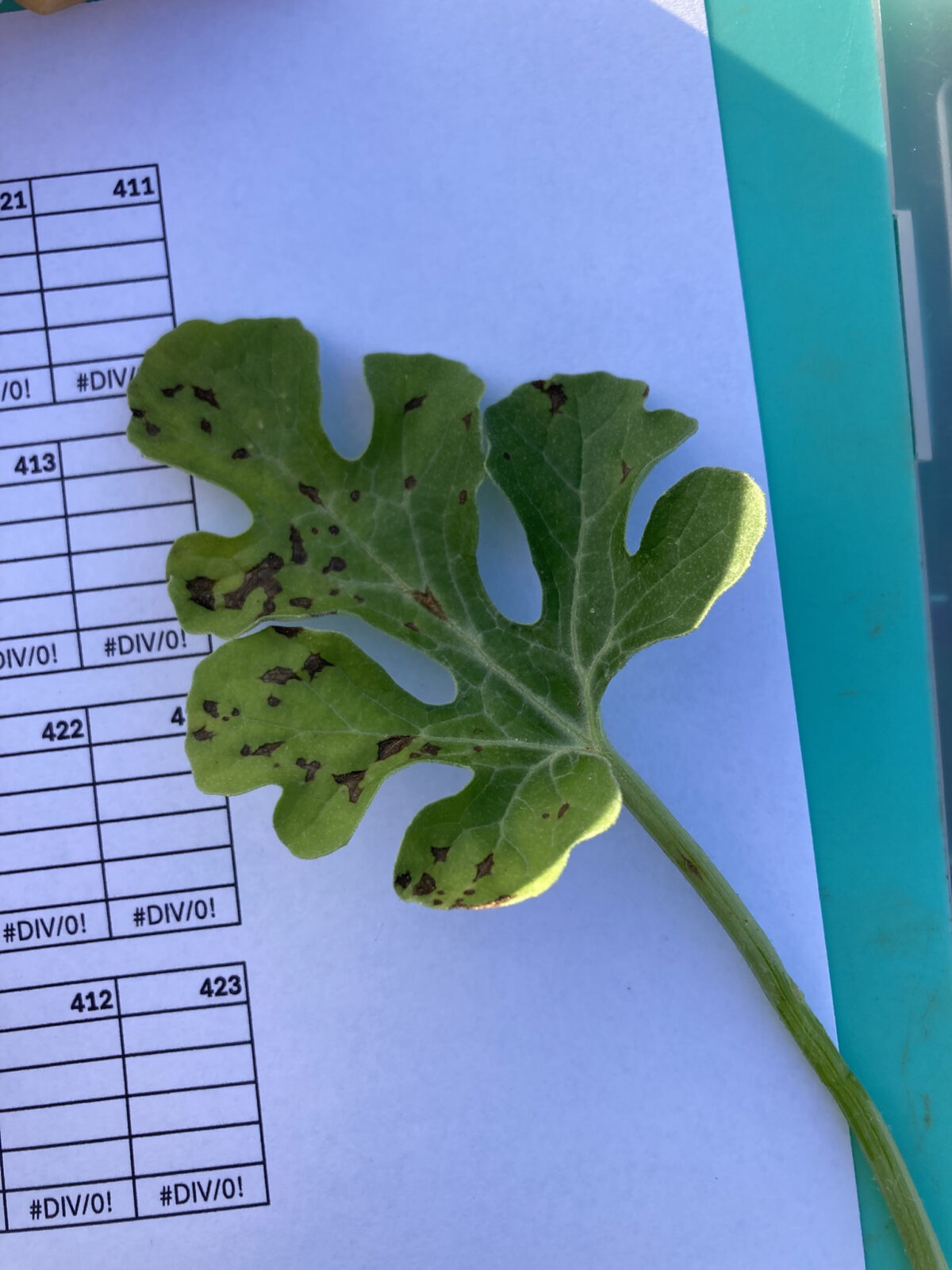
Watermelon Fruit Load Trial: Anthracnose symptoms on leaves (Dr. Coolong Lab, UGA 2025)
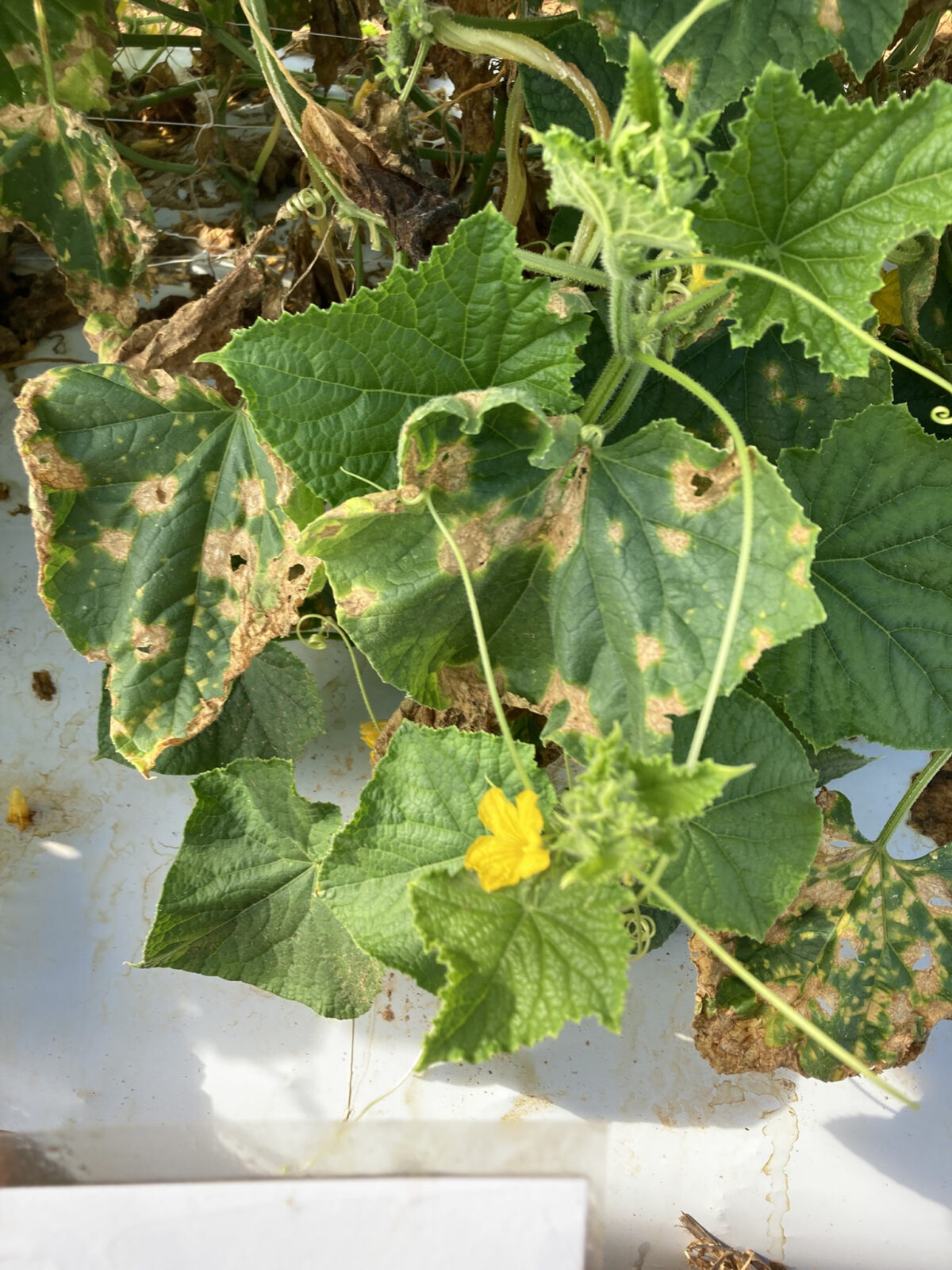
Cucumber Variety Trial: Anthracnose symptoms on cucumber leaves (Dr. Coolong Lab, UGA 2025)

Watermelon seeds pre- (left) and post-mechanical crushing (right) (Dr. Walcott lab, GA, 2025)

Mature fruits harvested from GA showing common symptoms associated with anthracnose caused by C. orbiculare (Dr. Walcott lab, GA, 2025)

Symptoms of anthracnose in watermelon seedlings grown from vacuum-infiltrated seeds in a growth chamber (Dr. Walcott lab, GA, 2025)
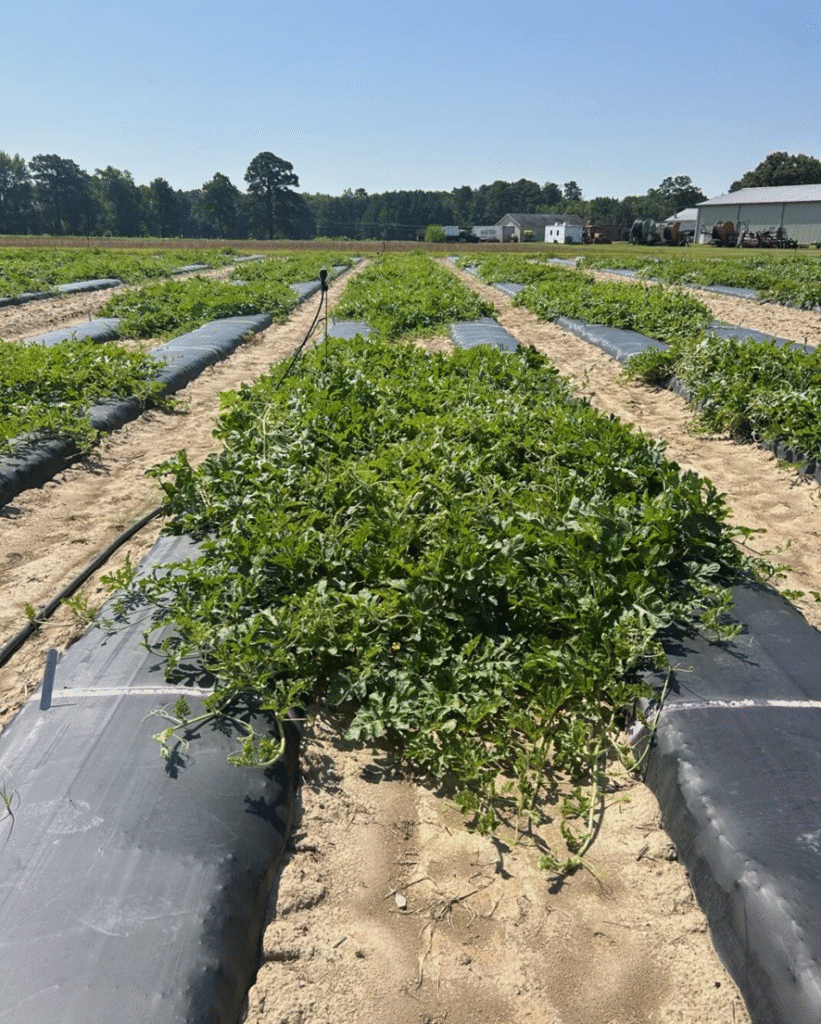
Fungicide field trial ( Virginia Tech, 2025)
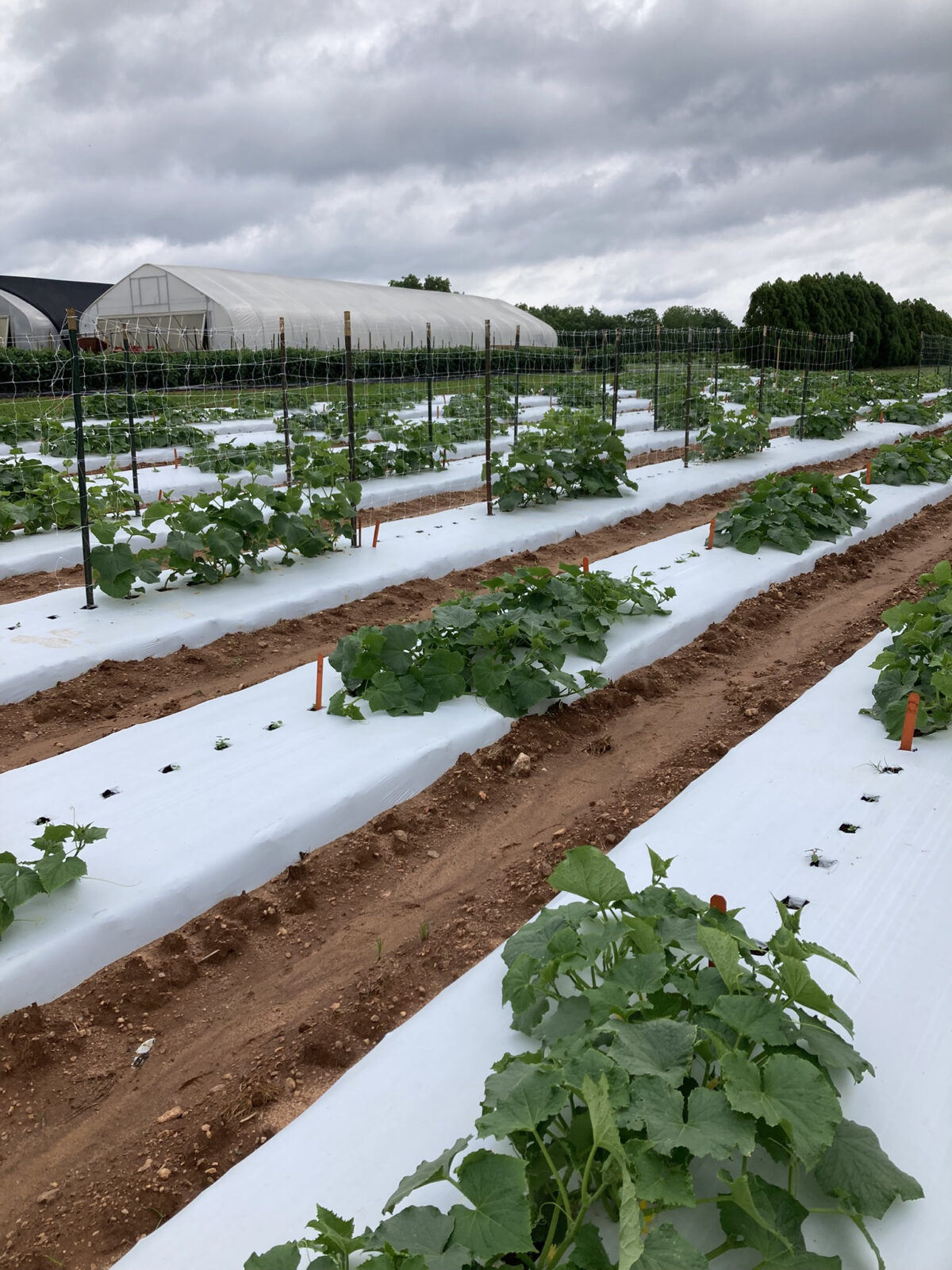
Cucumber Variety Trial: Plot layout of cucumber variety trial, early in the season (Dr. Coolong Lab, UGA 2025)
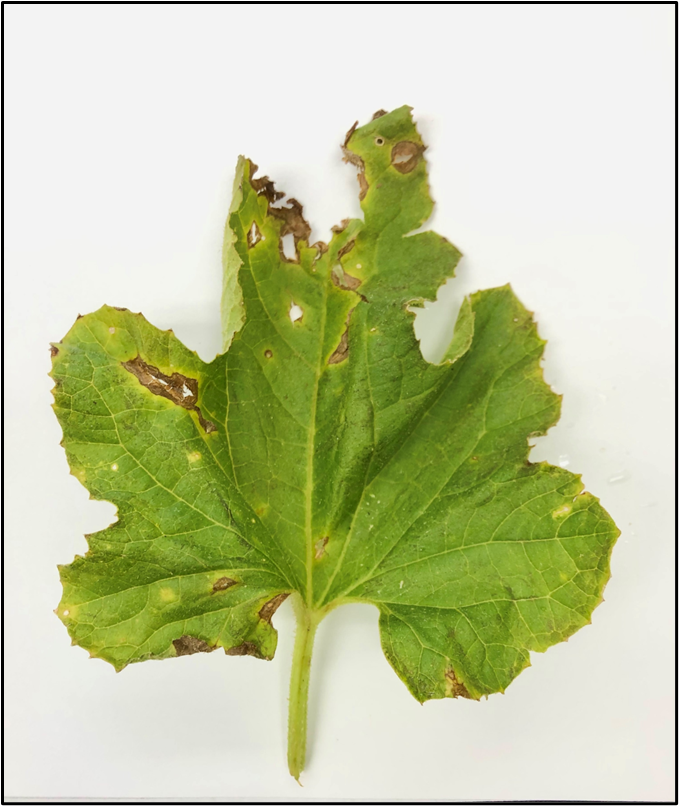
Anthracnose lesions on muskmelon leaf (Tift County; Georgia, 2025)
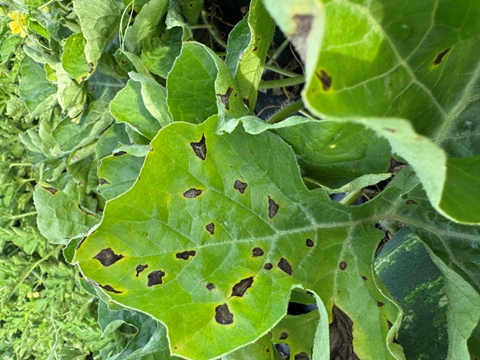
Early foliar symptoms of anthracnose on watermelon Leaf (Georgia, 2025)
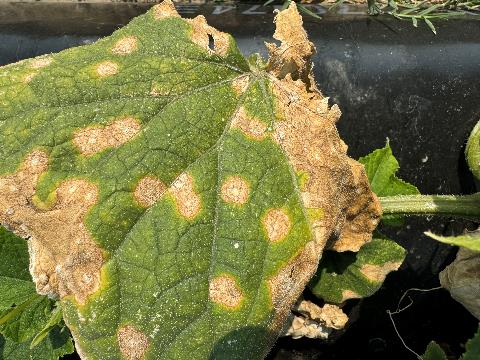
Foliar symptoms of anthracnose in the cucumber variety trial (Georgia, 2025)

Symptoms on leaves appear yellowish to dark brown in color that often turn necrotic on cucumbers leaf (Tift County, Georgia, 2025 )
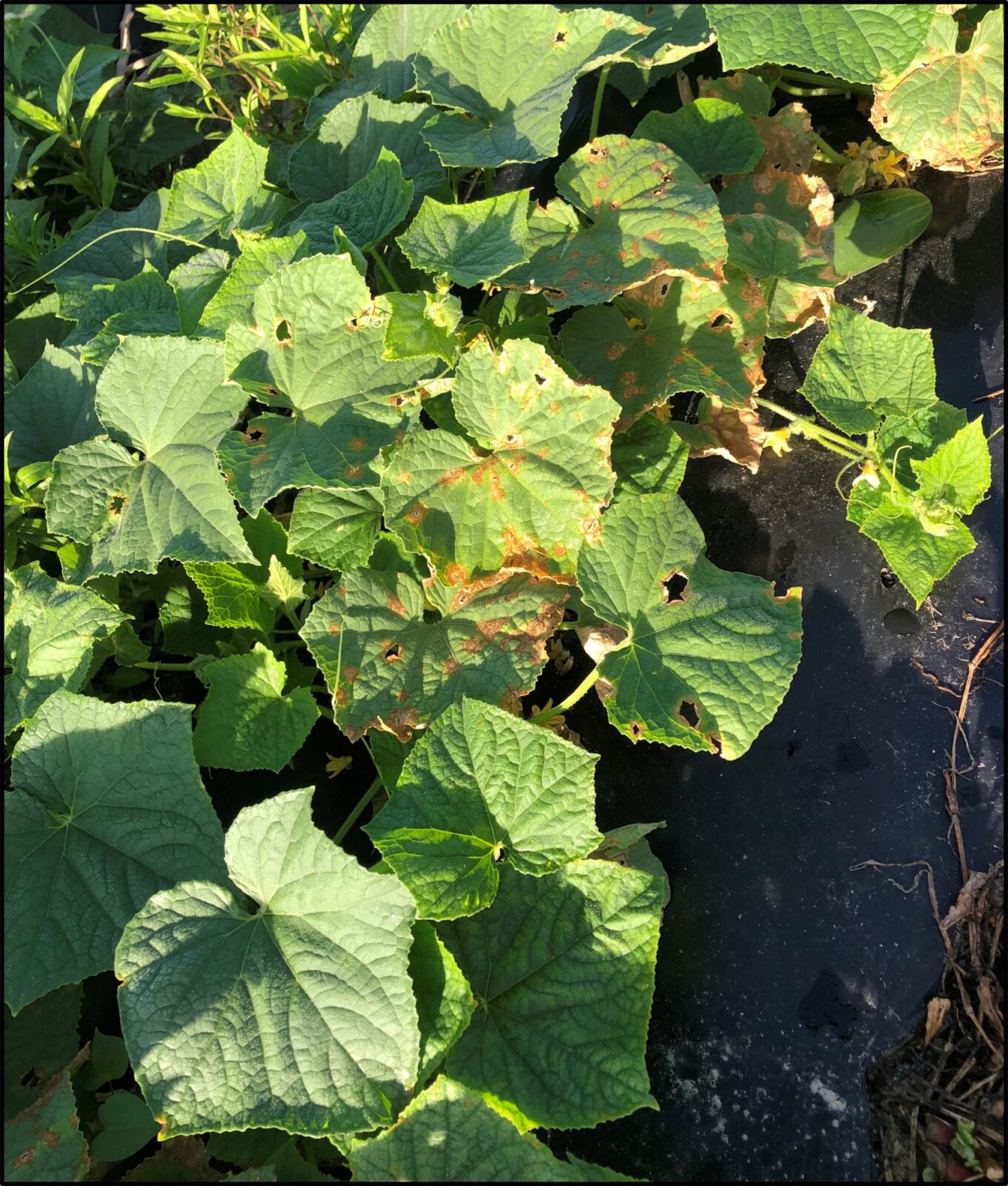
Symptoms on leaves appear yellowish to dark brown in color that often turn necrotic on cucumbers leaf (Tift County, Georgia, 2025 )

Anthracnose lesions on cucumber leaf (Tift County, Georgia, 2025)

Sunken water-soaked lesions with orange or salmon colored spore mass on watermelon fruit (Dodge county, Georgia, 2025)
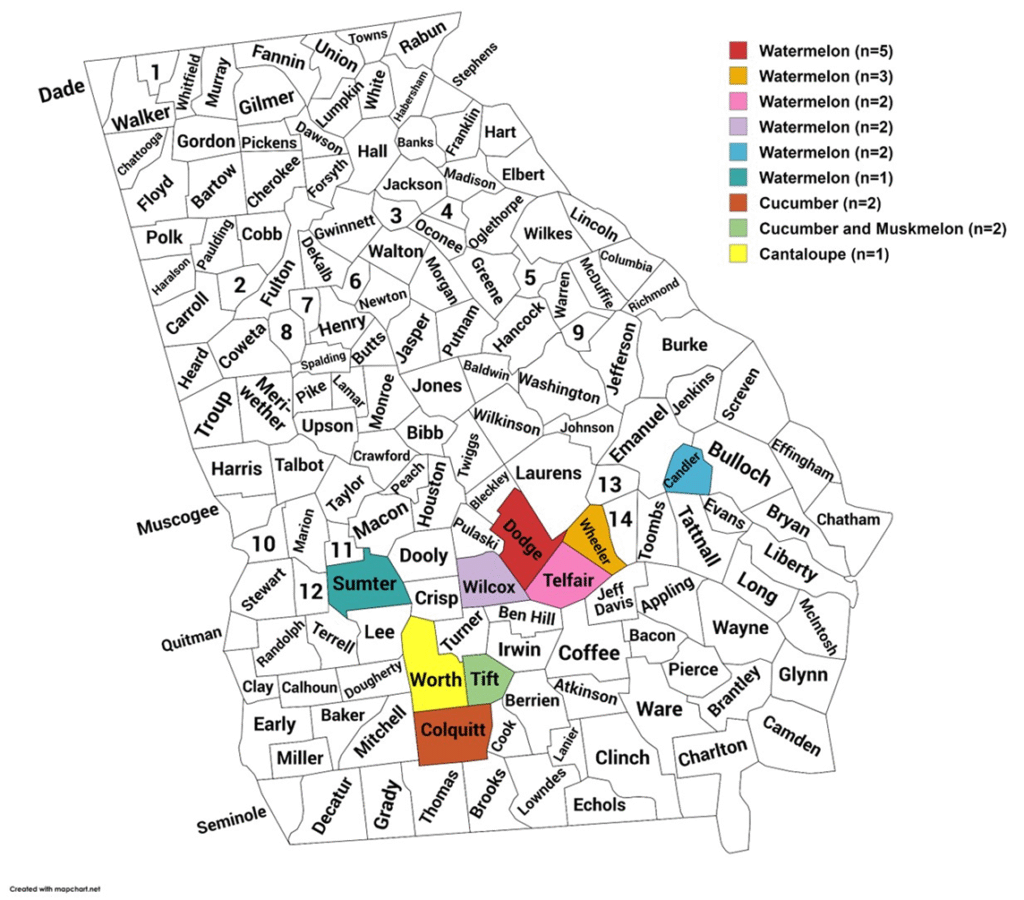
Map of cucurbit anthracnose outbreak in commercial cucurbits fields (Georgia, 2025)

Dark brown to black color lesions on watermelon stems (Georgia, 2025)
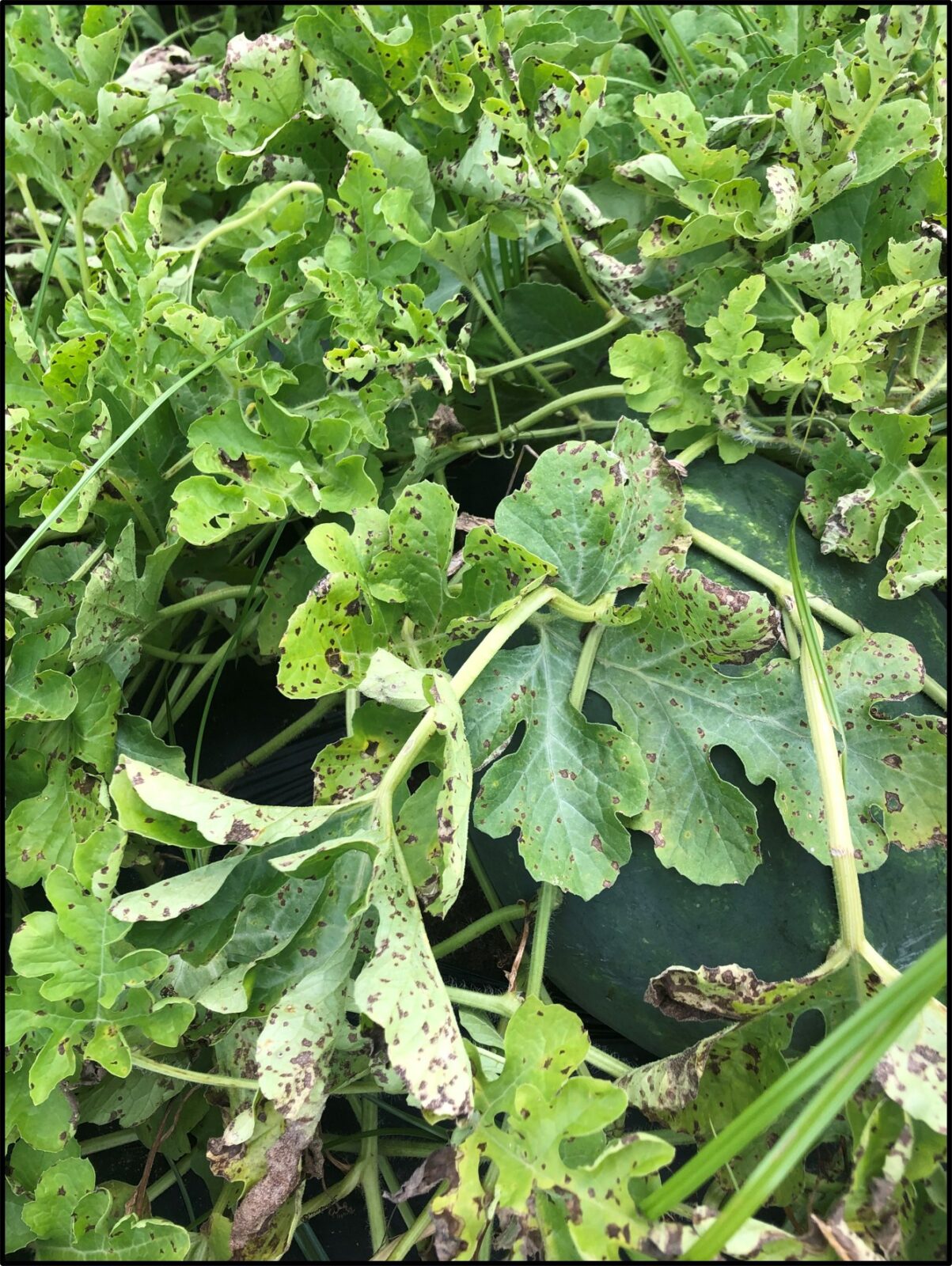
Dark brown to black color lesions with center fallen out giving “shot hole” appearance on leaves (Wilcox County, Georgia, 2025)
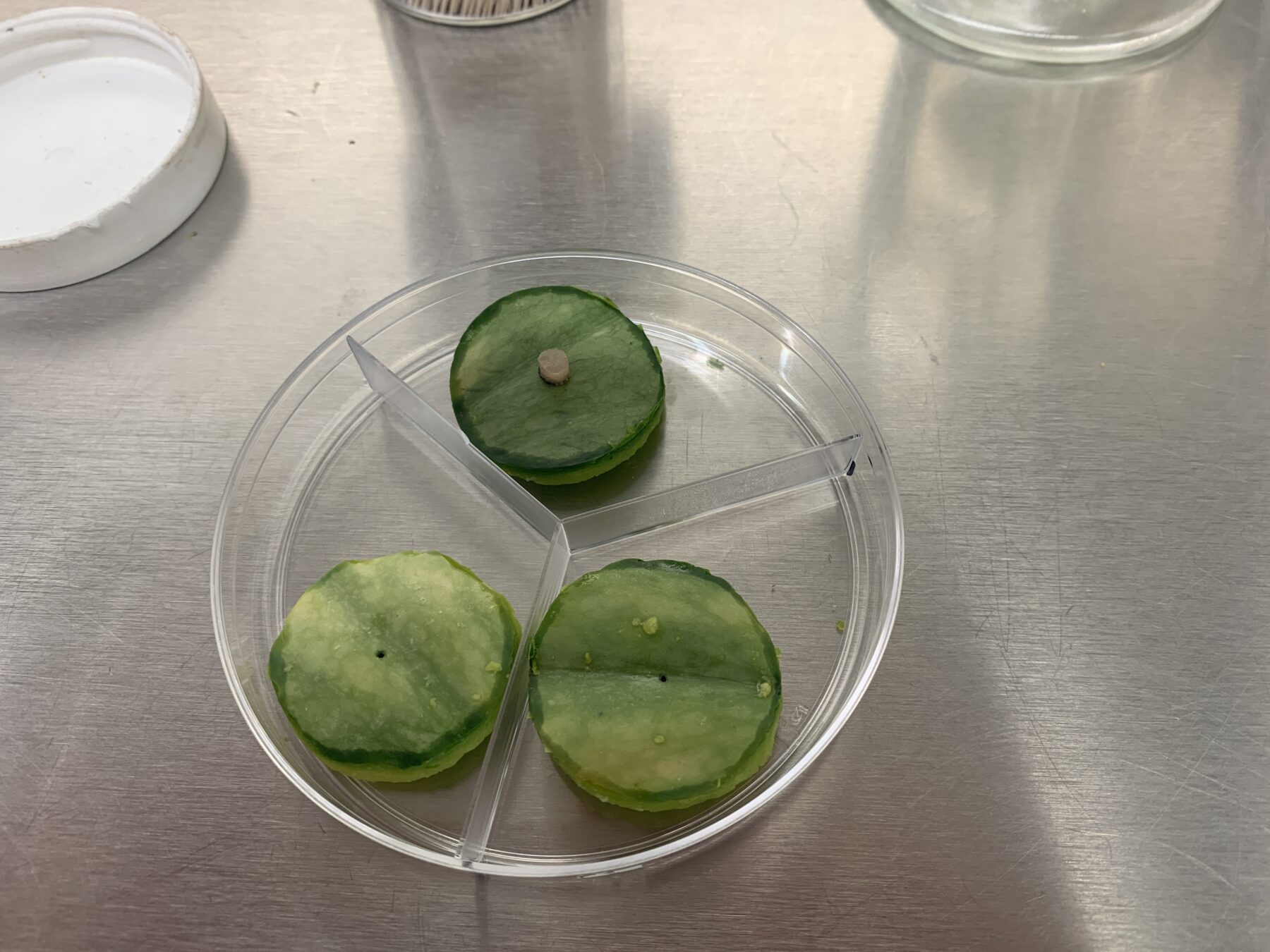
Fruit discs in a petri dish to test susceptibility of different aged fruit to anthracnose. The top disc has been inoculated with agar plug of Colletotrichum fungus while the two bottom discs were wounded by sterile toothpick before they are inoculated (Dr. Keinath’s Lab, Clemson, 2025)
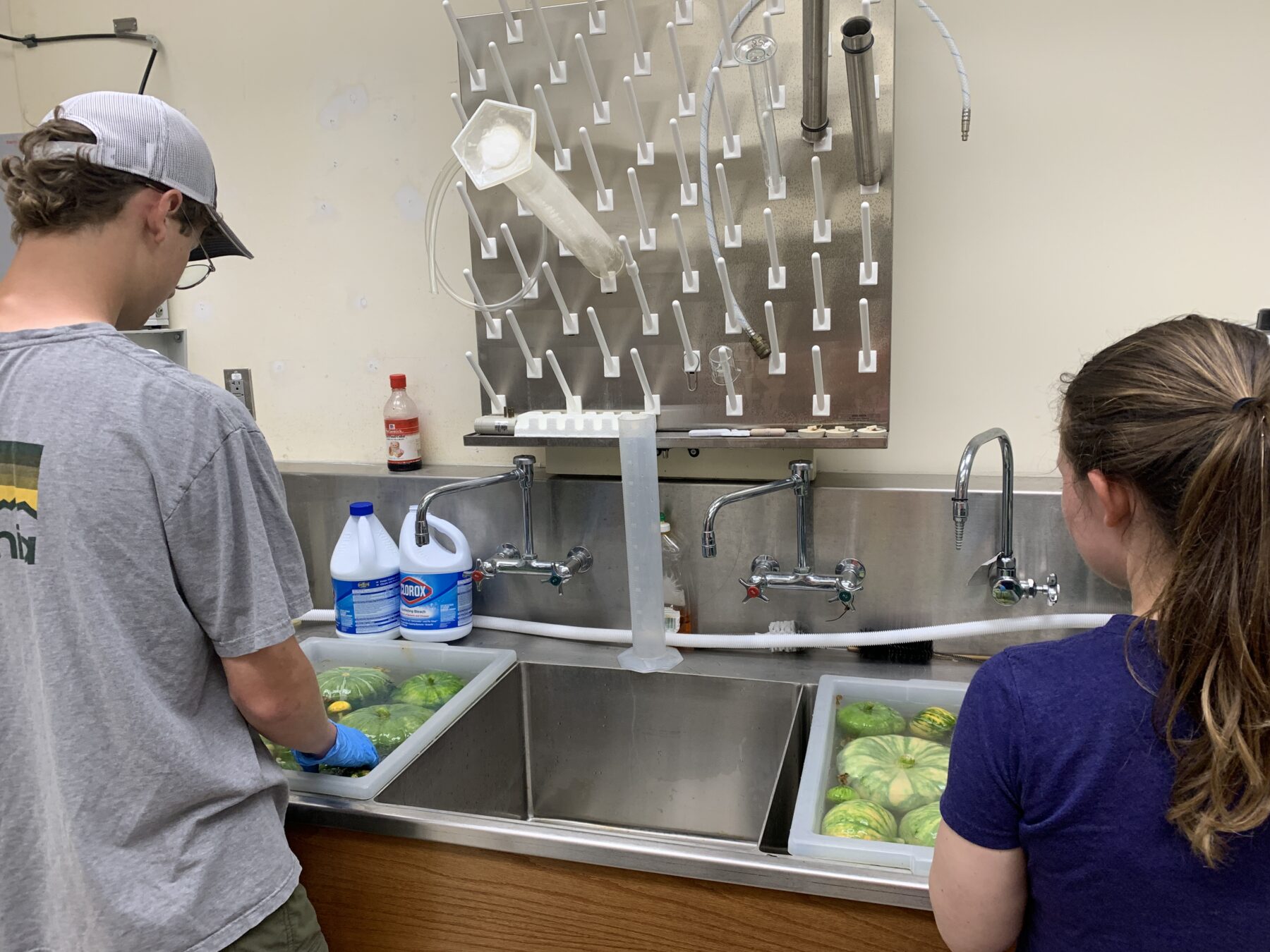
Summer interns disinfesting pumpkin fruit before it is challenged with the Colletotrichum fungus to find out which fruit ages are susceptible to anthracnose (Dr. Keinath’s lab, Clemson, 2025)
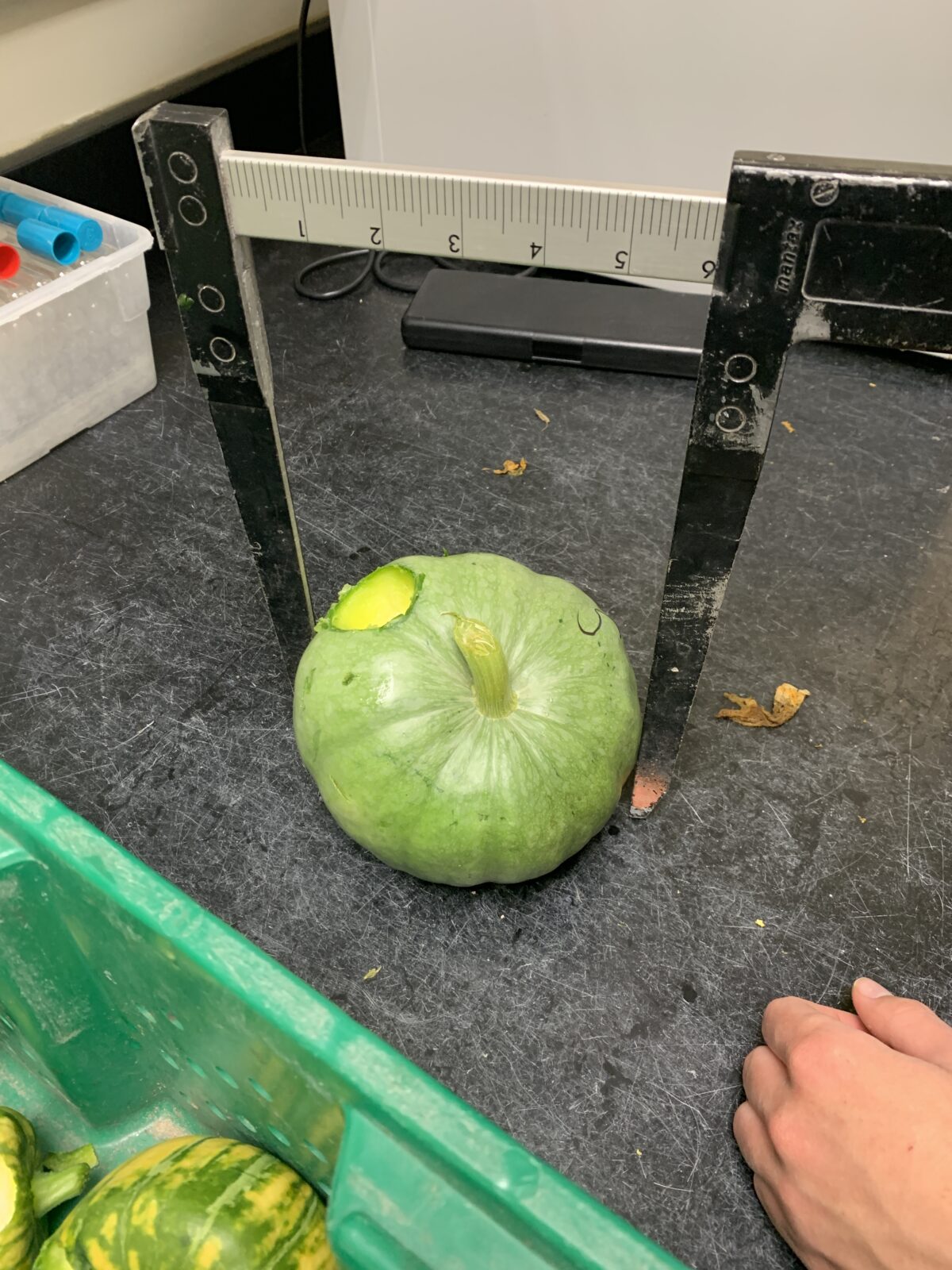
Measuring fruit with a caliper to record the size (Clemson,2025)

Typical symptoms of anthracnose on watermelon vines. The lesions are 1-2 inches long and tapered on the ends like a spindle in a weaver’s loom (Clemson, 2025)
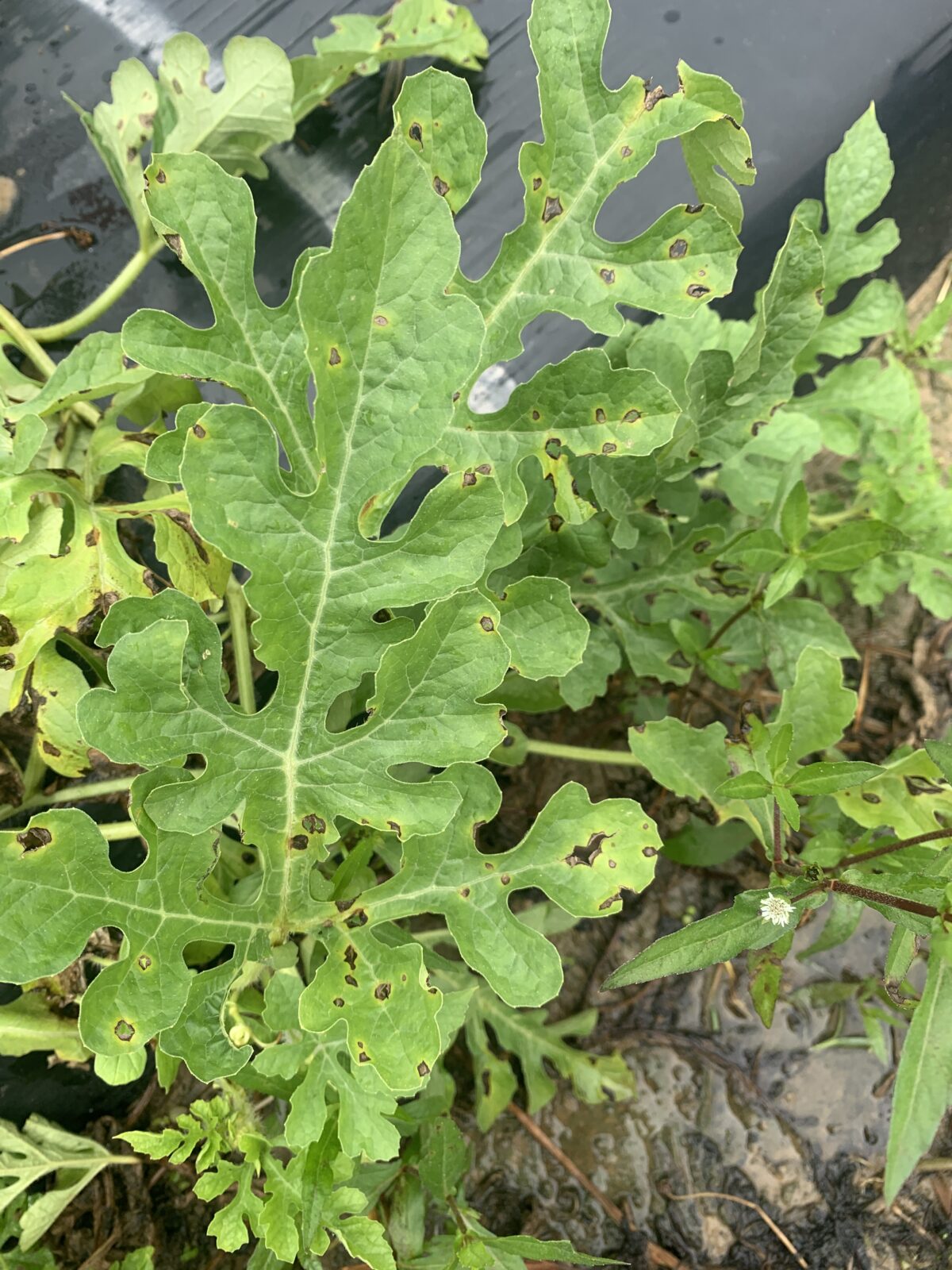
Leaf spots of anthracnose on ‘Sugar Baby’ watermelon in the fungicide trial in South Carolina. Note the irregular shape of the spots and the missing centers, termed “shot holes.” (Clemson, 2025)
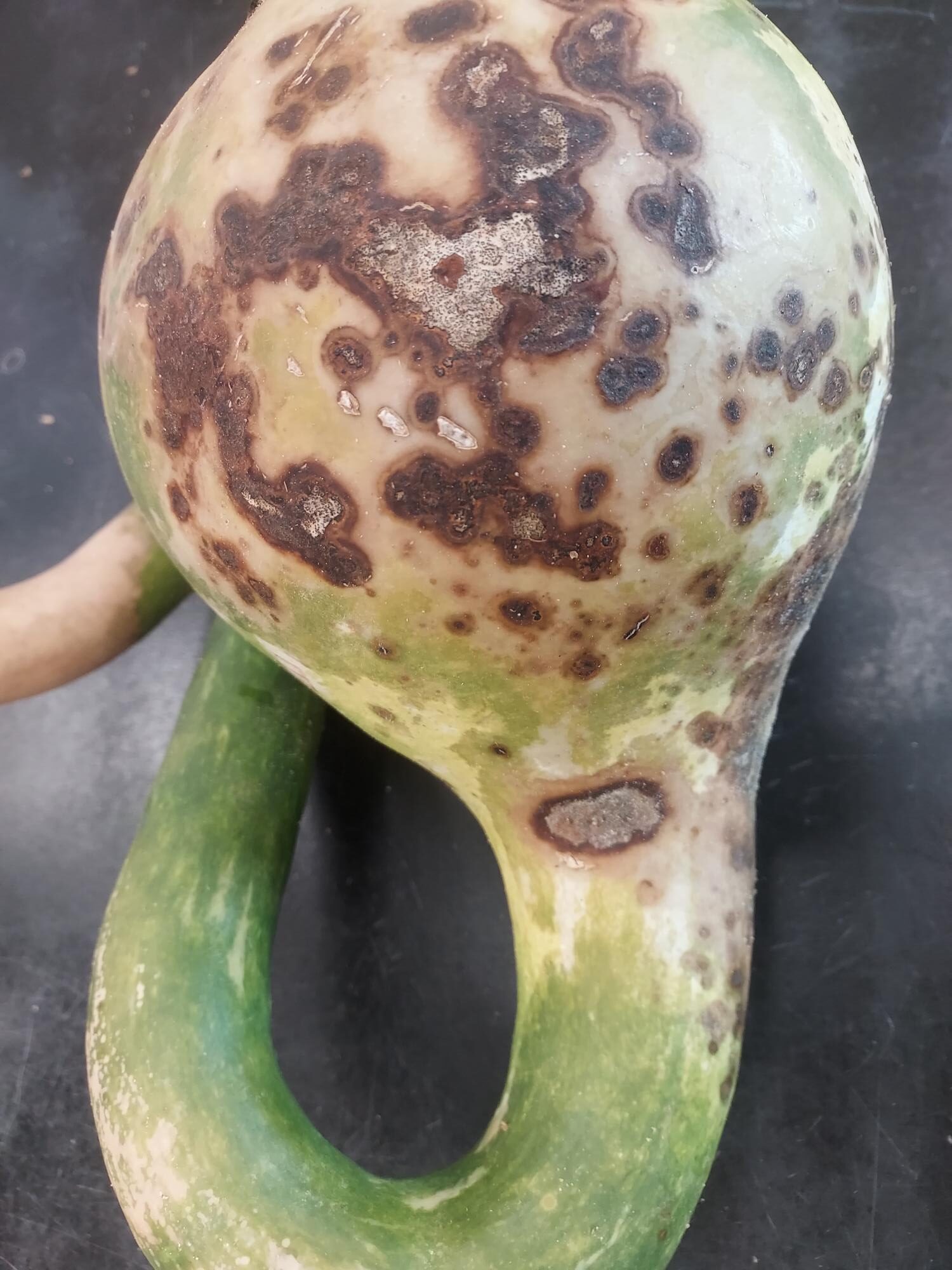
Fields survey 2025- Anthracnose fruit rot on gooseneck gourd in Clemson
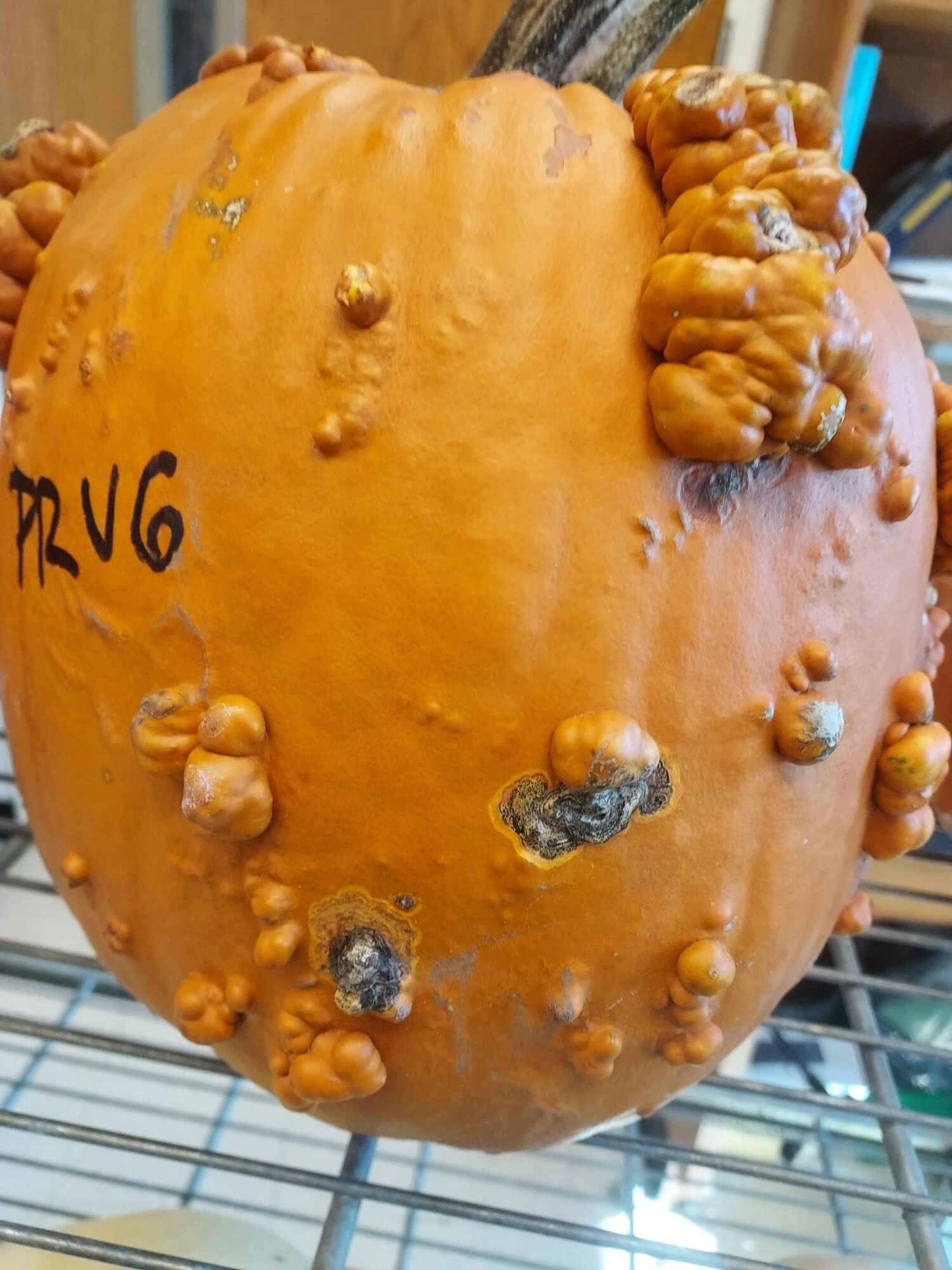
Fields survey 2025- Anthracnose fruit rot on warty jack-o-lantern pumpkin (Clemson)

Fields survey 2024- Watermelon fields infected with Anthracnose in Georgia

Fields survey 2024- Cucumber fields infected with Anthracnose in Georgia

Watermelon Irrigation trial: plot with misters beginning to have moderate anthracnose symptoms (Dr. Coolong Lab, UGA 2024

Watermelon Irrigation trial: Severe anthracnose symptoms on entire plot at end of season (Dr. Coolong Lab, UGA 2024)

Watermelon Irrigation trial: Plot layout and what it looks like when misters are on, misters simulate overhead irrigation (Dr. Coolong Lab, UGA 2024)